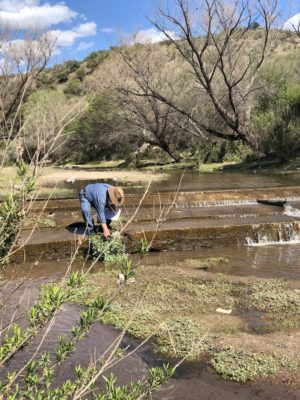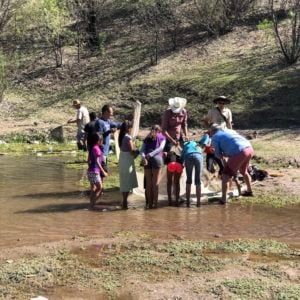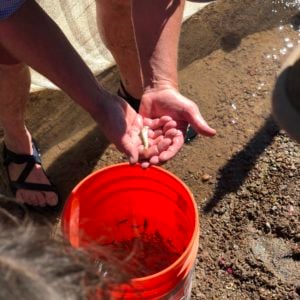Field Notes: Discovering Species in the Sierra Chivato
It was Friday evening. We sat atop the red rock-strewn peak awaiting bat sightings as the sun retreated behind the pastel and wooded horizon. The conservationist and herpetologist sitting next to me explained where Sky Islands got their appellation.
“The habitats at the top [of these mountains] are isolated from other similar habitats. The desert acts like the ocean, separating the ‘islands.’ What these result in are incredible miniature ecosystems, known collectively as the Madrean Archipelago.”

These Sky Islands are made up of 55 isolated mountains – 32 of which are located in Sonora, Mexico and are comprised of both native and transient species. These include half the bird species in North America as well as over 100 mammals, such as jaguars, turtles, butterflies, and lizards.
This particular bi-national journey began in Tucson, where my colleagues and I met up with the first group of participants. We then caravanned south of the Nogales border, to meet up with our Mexican cohorts, making way for Sierra Chivato – our oak, juniper, and pinyon pine-peppered destination. En route, each break or rendezvous was an opportunity to explore these special habitats.
That Wednesday afternoon at a river stop, a couple of snake identifications were made (including a coachwhip snake), along with frogs, fish, and a plethora of flora. Upon hearing owl calls later that evening, two biologists, a specialist, and I made our way up the wooded mountainside, where we identified two elf owls (the world’s smallest owl) up in the treetops.
The next evening, a scorpion expedition was in store! Our group was led by Tom Van Devender, Director of MDE and former Senior Research Scientist at the Arizona-Sonora Desert Museum of 25 years. We grabbed our black light flashlights and explored the rocky landscape. I personally spotted a couple handfuls of these glowing arachnids.

Friday evening, our final day of this incredible expedition might have been my personal favorite. Reptile Guy and I had been on a hike, scrambling over those beautiful red rocks when, upon taking a few minutes for a water break, a majestic golden eagle soared about 30 feet overhead. As if that great fortune wasn’t enough, upon our return to camp to show everyone our collected flora, I stumbled upon a small black insect with silvery legs. This discovery stumped the biologists (which I felt pretty proud about). They believe it to be a variety of Jerusalem cricket and I’m beyond excited to hear more as it’s sent off to additional experts for further analysis.

As species identifications and photos begin to flood through from this eye-opening adventure, I continue to reflect on the importance, as well as the pull within me, to learn more about not only protecting but preserving these special treasures of biological diversity. A very important lesson was reinforced over and over during this expedition. Take it from the beautiful yucca plant and its moth. Neither could exist if it weren’t for their symbiotic exchange. They are mutually beneficial to one another. Each species is important. Each species has value.


